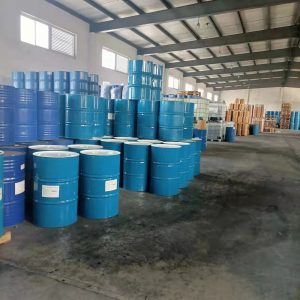Ether (Class VI hazardous)
Colorless transparent liquid. Has a peculiar pungent odor. With sweet odor.
Extremely volatile. Its vapor is heavier than air. It can be oxidized to peroxides, aldehydes and acetic acid under the action of air, and exposure to light can promote its oxidation. When ether contains peroxides, after evaporation of the separated residual peroxides can cause a strong explosion when heated to more than 100 ° C; these peroxides can be removed by adding 5% aqueous ferrous sulfate solution and shaking.

Reaction with anhydrous nitric acid, concentrated sulfuric acid and concentrated nitric acid mixture will also be violent explosion.
Soluble in low carbon alcohol, benzene, chloroform, petroleum ether and oil, slightly soluble in water.
Relative density 0.7134. melting point -116.3℃. Boiling point 34.6℃. Flammable, low toxicity.
It will slowly oxidize into peroxide in the air, peroxide is unstable, easy to explode when heated, should be kept away from light.
Propyl ether (three kinds of dangerous chemicals)
Colorless liquid, with ether flavor, very volatile and easy to flow and easy to catch fire.
Melting point -122℃, boiling point 90.5℃, relative density 0.7360 (20/4℃), flash point 4℃.
Slightly soluble in water, soluble with ethanol and other ethers, easy to generate explosive peroxide, so the manufacturing process can not be distilled to dry, so as not to cause an explosion.
Its vapor and air can form explosive mixtures, when open flame, high heat is very easy to burn and explode. It can react strongly with oxidizer. In the air for a long time can generate explosive peroxides
The temperature should not exceed 28℃. Packaging requirements for sealing, not in contact with air.
Butyl ether (Class VI hazardous chemicals)
Colorless liquid, slightly ether odor. Miscible with alcohol, ether and other organic solvents. Soluble in acetone. Insoluble in water. Stable in nature. Non-corrosive to metal, easy to produce explosive peroxide in storage, stable at room temperature and pressure.
Melting point -97.9
Boiling point 142.2
Water solubility almost insoluble in water

Density 0.7725
Red phosphorus (Class IV hazardous chemicals)
It is a giant covalent molecule with amorphous structure. [1] Appearance and properties: purplish-red amorphous powder, odorless, with metallic luster, non-phosphorescent in the dark. Not phosphorescent in the dark, odorless. Insoluble in water and carbon disulfide and organic solvents such as ethanol.

Diphosphorus Trisulfide (Class IV Hazardous Chemicals)
Yellow or light yellow crystal or powder, odorless, tasteless, decomposed by moisture and easily burned by heat or friction. In contact with strong oxidizing agents such as chromic anhydride, chlorate and potassium permanganate, it can react strongly and cause combustion or explosion. Reacts with water or water vapor to release toxic or flammable gases.
Combustion (decomposition) products: sulfur oxide, phosphorus oxide, phosphorane.
Tetraphosphorus Trisulfide (Class IV Hazardous Chemicals)
Yellowish green needle-like crystals. Insoluble in cold water, soluble in nitric acid, carbon disulfide, benzene and other organic solvents. Used in the manufacture of matches and matchbox friction surface. Can be obtained by combining white phosphorus and sulfide. The product is flammable, highly toxic and irritating.

